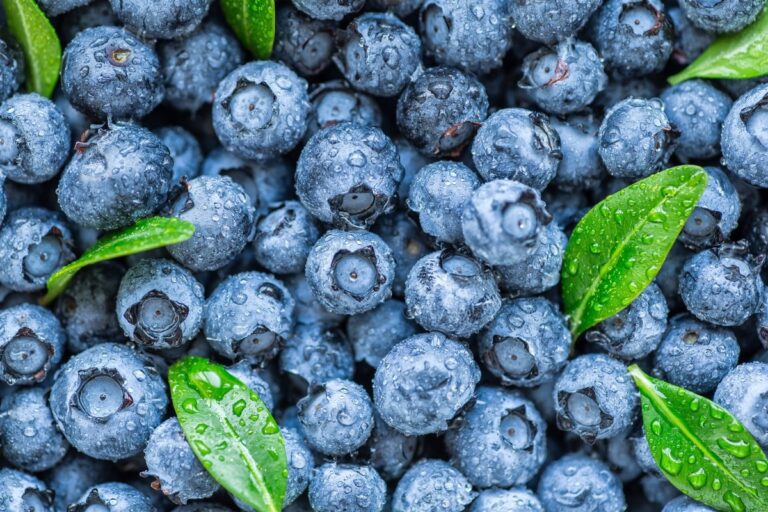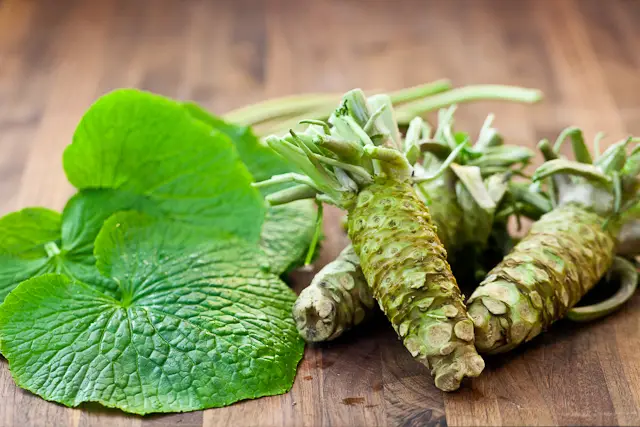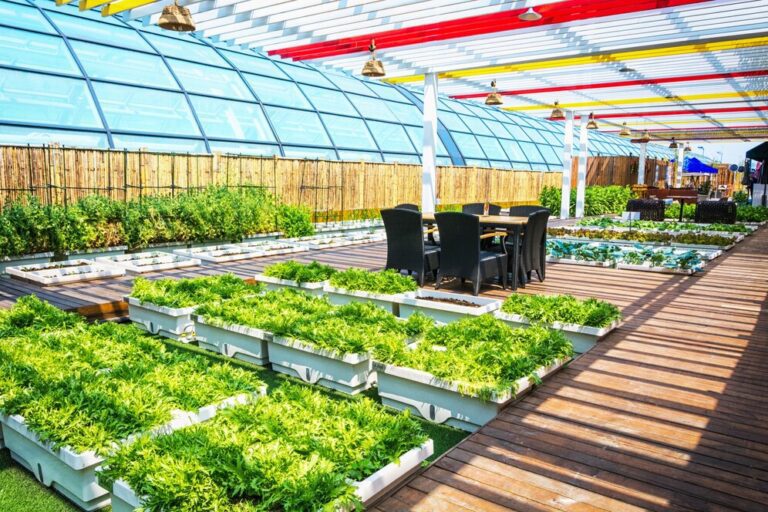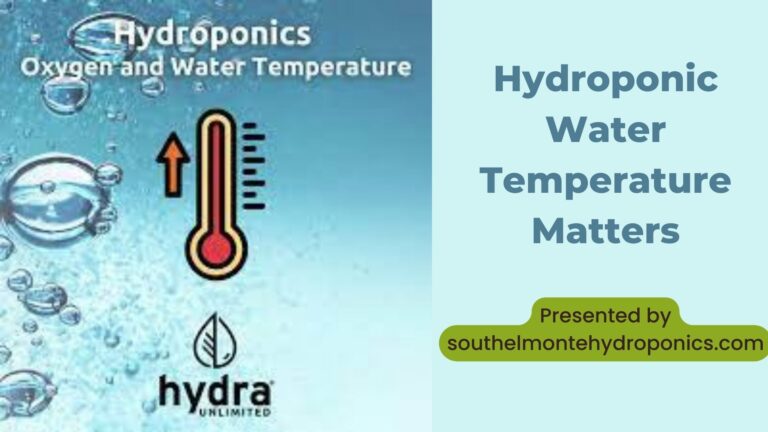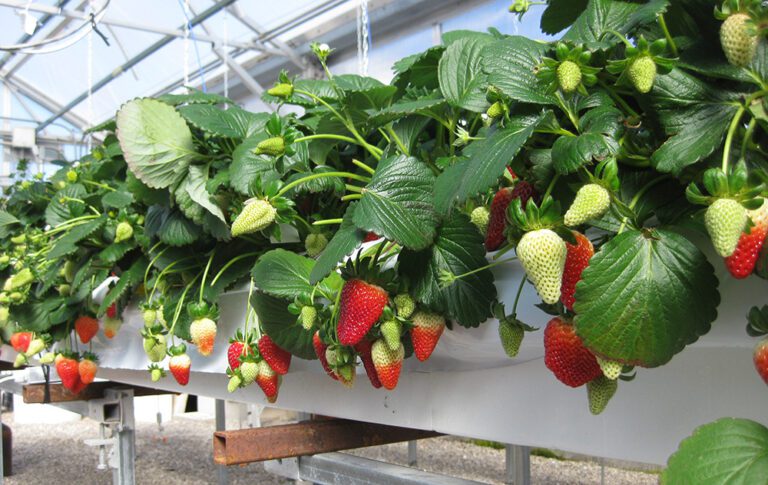Rockwool Alternatives: 12 Best Options for Hydroponic Farming
Did you know that hydroponic farming is revolutionizing the way we grow crops? With its ability to conserve water and space while maximizing yields, it’s no wonder more and more farmers are turning to this innovative method. But what about the controversial use of rockwool as a growing medium?
Concerns about its environmental impact and health risks have led many growers to seek alternative options. In this guide, we’ll explore 12 top alternatives to rockwool for hydroponic farming, each offering unique benefits and considerations. Whether you’re a seasoned pro or just dipping your toes into hydroponics, there’s something here for everyone. Say goodbye to rockwool woes and discover the best options for your hydroponic setup today!
Table of Contents
Understanding the Need for Alternatives in Hydroponic Farming
Hydroponic farming has gained significant popularity in recent years due to its numerous advantages over traditional soil-based agriculture. However, as with any method of cultivation, it is important to consider the need for alternatives in hydroponic farming.
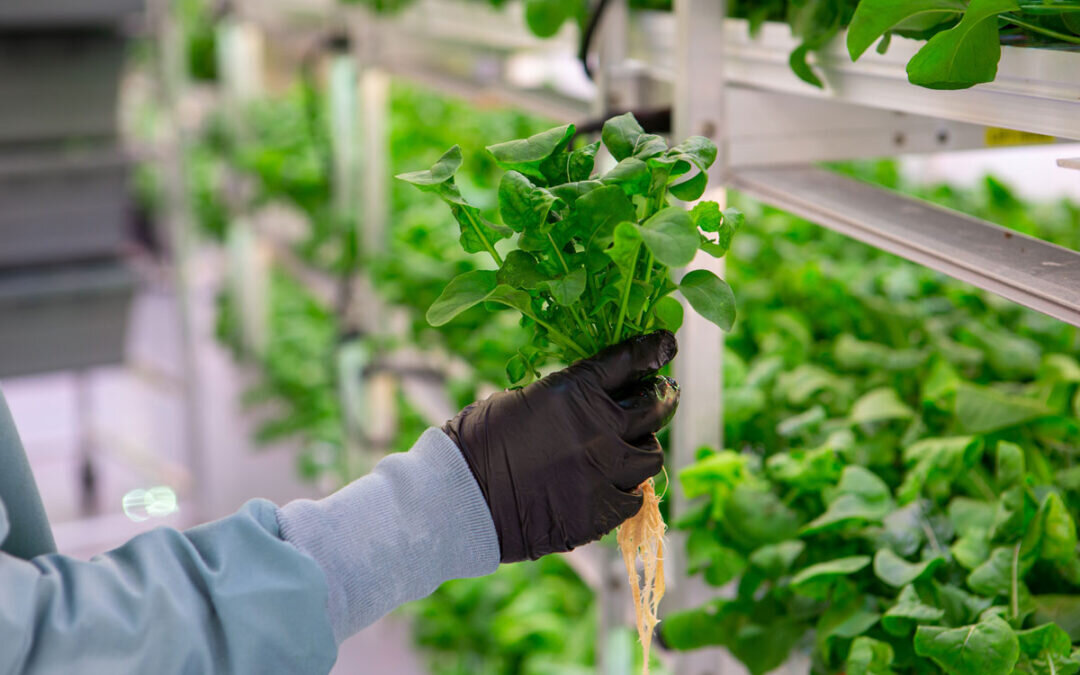
- Sustainability: Traditional hydroponic methods, including the use of rockwool, can pose environmental challenges due to the materials’ production and disposal. Alternatives offer a pathway to reduce reliance on non-renewable resources and mitigate the ecological impact of hydroponic farming.
- Diversity: Embracing alternative materials expands the range of options available in hydroponic farming. Different plants and agricultural systems have unique requirements, and these alternatives cater to those specific needs, promoting a more diverse and adaptable approach to cultivation.
By understanding the need for alternatives in hydroponic farming, we can strive towards a more sustainable and versatile approach to cultivation.
Exploring the Advantages of Using Alternative Materials in Hydroponics
Hydroponic farming is gaining popularity as a sustainable and efficient method of growing plants without soil. Traditionally, rockwool has been widely used as a growing medium in hydroponic systems due to its excellent water retention and aeration properties. However, the need for alternatives in hydroponic farming is becoming increasingly important, and exploring other materials can offer several advantages.
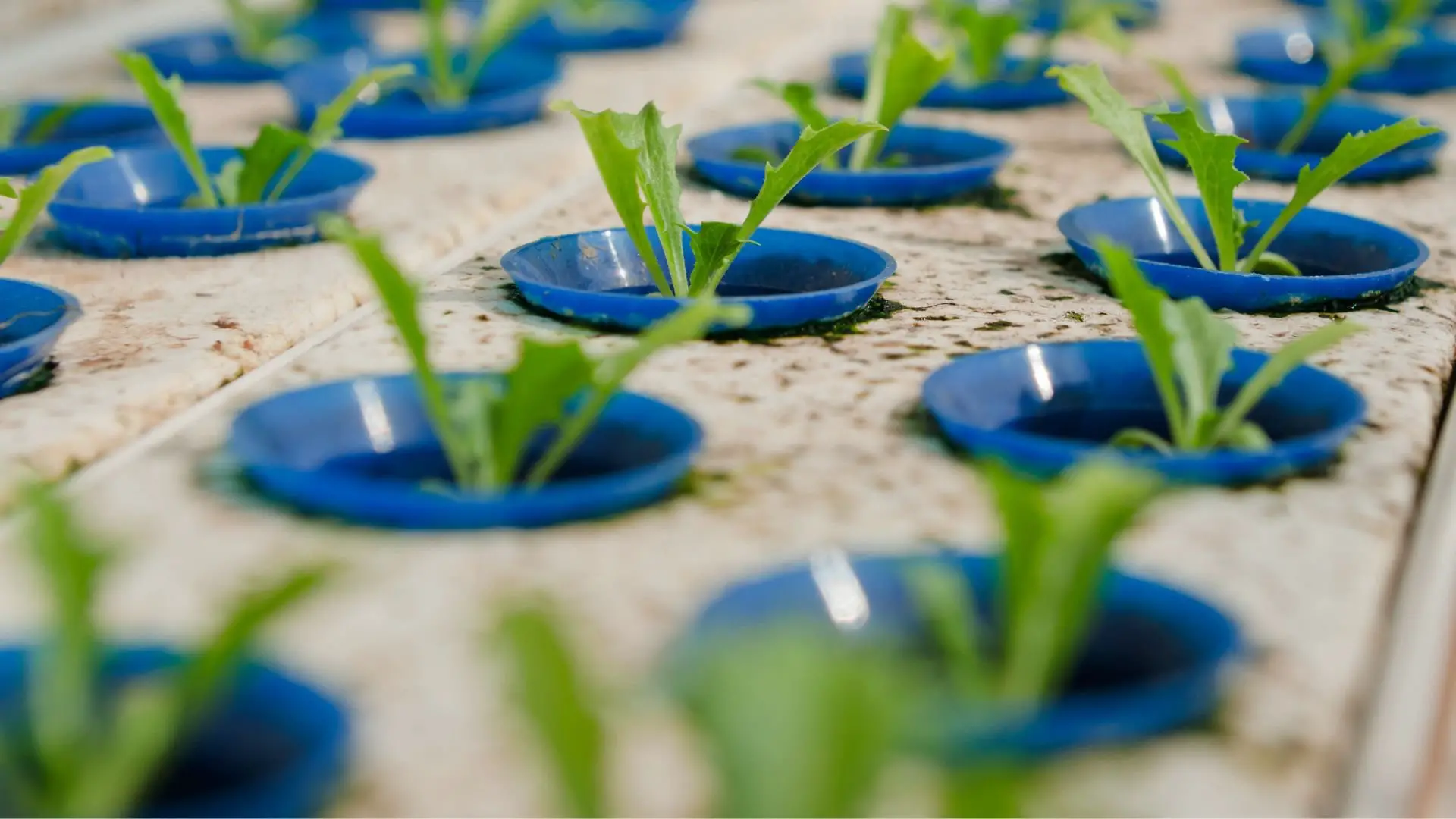
- Coco Coir:
- Derived from coconut husks, coco coir is a sustainable and renewable resource.
- High water retention capacity: It holds moisture well, reducing the frequency of watering.
- Optimal drainage: Ensures that excess water drains away, preventing root rot.
- pH-neutral: Provides a stable pH environment for plant roots.
- Holds onto nutrients: Reduces the need for frequent nutrient supplementation.
- Environmentally friendly: Minimizes the ecological impact.
- Perlite:
- Lightweight: Made from volcanic rock, perlite is easy to handle and transport.
- Excellent drainage: Its porous structure allows excess water to flow out.
- Aeration: Provides air pockets for root oxygenation.
- Sterile and pest-free: Free from diseases, pests, and weeds.
- Hygienic: Suitable for maintaining a clean hydroponic systems.
Both coco coir and perlite offer advantages that enhance plant growth while being environmentally conscious choices. Hydroponic farmers can benefit from using these alternatives to traditional rockwool, promoting efficient and sustainable agriculture. 🌱🌿
Exploring the Advantages of Using Alternative Materials in Hydroponics
| Advantages | Description |
|---|---|
| 1. Sustainability | – Reduced Environmental Impact: Alternative materials often utilize recycled or sustainable resources, lowering the ecological footprint of hydroponic systems. |
| – Longevity and Reusability: Some alternatives have a longer lifespan and can be reused, promoting resource efficiency. | |
| 2. Cost-Effectiveness | – Lower Initial Costs: In some cases, alternative materials may be more affordable upfront, contributing to cost savings. |
| – Reduced Operating Costs: Certain alternatives can lower ongoing expenses, such as energy or maintenance costs. | |
| 3. Customization and Flexibility | – Adaptability: Alternative materials may offer more flexibility in system design, allowing customization to specific needs and space constraints. |
| – Innovative Designs: The use of alternative materials can lead to creative and efficient hydroponic system designs. | |
| 4. Accessibility | – Widespread Availability: Some alternative materials are readily available, making them accessible for hydroponic enthusiasts worldwide. |
| – Local Sourcing: Locally sourced materials may be easier to obtain, reducing dependence on distant suppliers. | |
| 5. Reduced Weight | – Ease of Handling: Lightweight alternative materials simplify system installation, handling, and adjustments. |
| – Transportation Efficiency: Reduced weight can decrease transportation costs and energy use during distribution. | |
| 6. Compatibility with Organic Practices | – Organic Certification: Certain alternative materials align with organic farming principles, allowing for organic hydroponic practices. |
| – Reduced Chemical Exposure: Materials chosen for their organic nature may reduce the risk of unwanted chemical interactions. | |
| 7. Innovation and Experimentation | – Encourages Experimentation: The use of alternative materials fosters experimentation and innovation within the hydroponics community. |
| – Potential for New Solutions: Exploring alternatives may lead to the discovery of new, efficient, and sustainable hydroponic solutions. |
Note: While alternative materials offer various advantages, it’s crucial to consider their specific properties, compatibility with plants, and long-term durability for successful integration into hydroponic systems.
In my quest for Rockwool alternatives, Premium Horticultural Perlite has emerged as a standout option. Its lightweight nature and excellent drainage properties make it a compelling substitute for Rockwool in hydroponic systems. I’ve found that Perlite provides optimal aeration for plant roots while maintaining adequate moisture levels, ensuring healthy growth and nutrient uptake.
Moreover, Perlite’s sterile composition minimizes the risk of introducing pests and diseases into my hydroponic setup, promoting a cleaner and more hygienic environment for plant cultivation. Its versatility extends beyond hydroponics, as I’ve also successfully used Perlite as a component in soilless potting mixes for container gardening. Overall, Premium Horticultural Perlite has proven to be a reliable and effective alternative to Rockwool, offering exceptional performance and ease of use in various growing applications.
- Lightweight: Premium Horticultural Perlite is lightweight, making it easy to handle and mix into soil or potting mixes.
- Improves Drainage: Perlite improves soil drainage, preventing waterlogging and reducing the risk of root rot and other moisture-related issues.
- Aeration: It enhances soil aeration, creating a loose and airy texture that promotes healthy root growth and nutrient uptake.
- pH Neutral: Perlite is pH neutral, meaning it won’t affect the acidity or alkalinity of the soil, providing a stable growing environment for a wide range of plants.
- Insulation: Perlite acts as insulation for plant roots, protecting them from temperature fluctuations and extremes.
- Sterile: Premium Horticultural Perlite is sterile, reducing the risk of introducing pests, diseases, or weed seeds into the soil.
- Versatile: Perlite can be used in various gardening applications, including seed starting mixes, container gardening, and hydroponic systems.
- Dusty: Perlite can be dusty, which may cause irritation to the respiratory system if inhaled, so it’s essential to handle it with care and wear a mask if necessary.
- Limited Nutrient Content: While perlite improves soil structure and drainage, it doesn’t provide nutrients itself, so additional fertilization may be necessary.
- Cost: Compared to other soil amendments, perlite may be relatively expensive, impacting the overall cost of gardening projects.
- Environmental Concerns: Perlite mining and processing can have environmental impacts, including habitat disruption and energy consumption.
- Limited Availability: Availability of Premium Horticultural Perlite may vary depending on location, requiring special ordering or alternative options for some users.
- Non-Renewable Resource: Perlite is a non-renewable resource, meaning its extraction can deplete natural deposits over time.
- Appearance: Some gardeners may find the bright white appearance of perlite visually unappealing in soil mixes.
Factors to Consider When Choosing Rockwool Alternatives for Hydroponic Farming
When it comes to hydroponic farming, the choice of growing medium is crucial for the success of your crops. While rockwool has long been a popular option for its excellent water retention and aeration properties, there are alternative materials that can offer similar benefits. However, there are several factors to consider when choosing rockwool alternatives for hydroponic farming.
Assess the material’s ability to retain moisture without causing waterlogging.
Different plants have varying water requirements, so choose a medium that meets their needs.
Proper drainage is essential to prevent root rot.
Maintain a stable pH level for optimal nutrient uptake.
Some materials may have naturally high or low pH; select a medium with a suitable pH or adjust it as needed.
Regular pH monitoring and adjustments are crucial.
Consider texture, density, and porosity.
Porous mediums allow for better oxygenation of roots.
Texture and density impact stability and support for growing plants.
Evaluate cost-effectiveness and accessibility.
Some alternatives may be more affordable or readily available based on location and market availability.
Commercial growers should consider long-term sustainability and profitability.
In conclusion, choosing the right rockwool alternative for hydroponic farming requires careful consideration of various factors. From water-holding capacity and pH stability to physical properties and cost, each aspect plays a role in determining the suitability of the alternative material for your specific needs. By taking these factors into account, you can ensure optimal plant growth and success in your hydroponic endeavors.
Coco Coir: A Versatile and Sustainable Alternative for Hydroponics
Coco coir, derived from the fibrous husk of coconuts, has emerged as a versatile and sustainable alternative for hydroponic farming. This natural byproduct has gained popularity among gardening enthusiasts for its ability to enhance plant growth, support root development, and improve overall plant health.
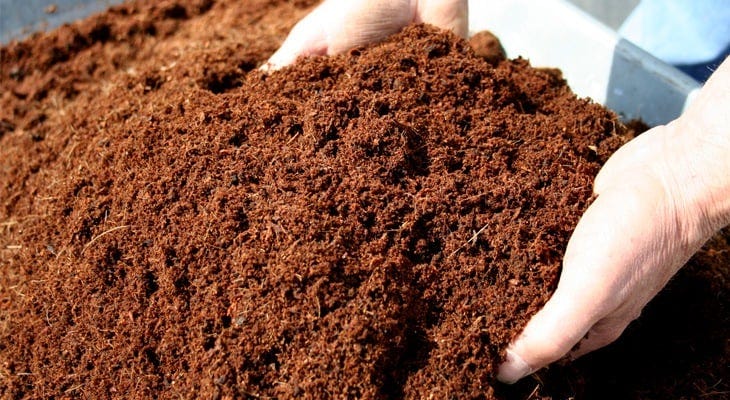
- Exceptional Water Retention: Coco coir boasts excellent water retention capabilities, efficiently holding and releasing moisture to provide a consistent water supply to plants in hydroponic systems.
- Good Drainage Properties: The fibrous nature of coco coir ensures proper drainage, preventing waterlogging and reducing the risk of root rot and other water-related issues commonly seen in hydroponic setups.
- Well-Balanced Nutrient Profile: Coco coir offers a balanced array of essential nutrients necessary for plant growth, including potassium, phosphorus, and micronutrients. Its neutral pH level enables precise control over nutrient uptake, promoting healthy plant development.
- Environmental Sustainability: Production of coco coir requires minimal water and energy resources compared to other growing mediums. As coconut trees continuously produce husks, coco coir is a renewable resource. Its biodegradable nature ensures minimal environmental impact, making it an eco-friendly choice for hydroponic farming.
By harnessing the potential of coco coir, gardening enthusiasts can cultivate thriving plants while promoting sustainability and environmental stewardship.
Perlite: Lightweight and Efficient Medium for Hydroponic Systems
Perlite is a lightweight and efficient medium that has become increasingly popular in hydroponic systems. Derived from volcanic glass, perlite is processed into small and porous granules that provide excellent aeration and drainage for plant roots. This unique property makes perlite an ideal choice for hydroponic farming, where maintaining proper oxygen levels and moisture control is essential for plant growth.

- Lightweight and Easy Handling:
- Perlite’s granular structure makes it easy to handle, transport, and fill containers.
- Its lightweight nature simplifies maintenance tasks.
- Inert Composition and Safety:
- Perlite is inert and does not decompose or release harmful substances into the system.
- It provides a safe and reliable medium for plant growth.
- Promotes Root Growth:
- The porous structure allows even distribution of water and nutrients to plant roots.
- Efficient moisture management prevents waterlogged conditions and supports healthy root development.
- Reduced Risk of Diseases:
- Proper moisture control reduces the risk of diseases caused by excessive moisture.
- Healthy roots lead to better nutrient uptake and overall plant health.
- Versatile and Reliable:
- Perlite is suitable for both small-scale home setups and large commercial operations.
- It balances aeration, drainage, and water retention, ensuring optimal plant growth.
By incorporating perlite into hydroponic systems, farmers can create an environment that supports vigorous plant growth while maintaining safety and efficiency.
Vermiculite: Enhancing Water Retention in Hydroponic Farming
Vermiculite is a versatile and effective alternative material for hydroponic farming due to its ability to enhance water retention in the growing medium. This natural mineral undergoes a process of heating and expanding, resulting in its unique structure that allows it to absorb and hold moisture. By incorporating vermiculite into hydroponic systems, gardeners can ensure that their plants have a stable and consistent water supply, which is crucial for their growth and development.

- Optimal Moisture Levels: Vermiculite’s water retention properties maintain ideal moisture levels in hydroponic growing media, promoting robust root growth and reducing the risk of drought stress among plants.
- Efficient Water Usage: The increased water-holding capacity of vermiculite allows for more efficient water utilization in hydroponic systems, supporting sustainability efforts in agriculture by conserving water resources.
- Excellent Aeration: Vermiculite provides excellent aeration, ensuring roots have access to essential oxygen for respiration. This supports overall plant health and helps prevent common issues like root rot associated with poorly aerated mediums.
- Combination Usage: It’s important to combine vermiculite with other materials to ensure adequate drainage and prevent compacted growth media, maximizing its effectiveness in hydroponic setups.
In summary, vermiculite is a valuable alternativefor hydroponic farming, enhancing water retention and promoting healthy root development. Its ability to improve water usage efficiency and provide essential aeration contributes to successful and sustainable gardening practices in hydroponic systems.
Clay Pebbles: The Ideal Solution for Aeroponic Systems
Clay pebbles, also known as expanded clay aggregates, emerge as the ideal solution for aeroponic systems in hydroponic farming. These lightweight, porous clay balls offer exceptional properties that make them a favored choice among growers seeking optimal plant growth and development.

Porous clay pebbles allow for adequate airflow and oxygenation around plant roots.
Prevents waterlogging and promotes healthy root development.
Ensures plants receive necessary nutrients and moisture without suffocation.
Uniform size and shape of pebbles provide stability.
Prevents root entanglement, allowing plants to grow freely.
Reduces the risk of disease and root rot.
Clay pebbles maintain structural integrity over multiple crop cycles.
Unlike organic mediums, they do not break down over time.
Provides a reliable growing medium for consistent plant growth.
Overall, clay pebbles prove to be an excellent choice for aeroponic systems in hydroponic farming. Their exceptional water and air holding capacity, stability, and durability make them an ideal growing medium for ensuring optimal plant health and productivity. Whether you are a beginner or an experienced hydroponic grower, clay pebbles can undoubtedly enhance the success of your aeroponic endeavors.
In my search for Rockwool alternatives for my hydroponic system, Hydro Clay Pebbles have emerged as a top contender. Their excellent drainage properties and lightweight nature make them an ideal substitute for Rockwool cubes or mats. I’ve found that these clay pebbles provide ample aeration for plant roots while ensuring consistent moisture levels, promoting healthy growth and nutrient uptake.
Moreover, Hydro Clay Pebbles are reusable and easy to clean, offering a sustainable option for hydroponic growers. Their inert composition allows for precise control over nutrient levels in the hydroponic solution, providing a stable growing environment for a wide range of plants. Overall, Hydro Clay Pebbles have proven to be a reliable and effective alternative to Rockwool, offering superior drainage and versatility in hydroponic systems.
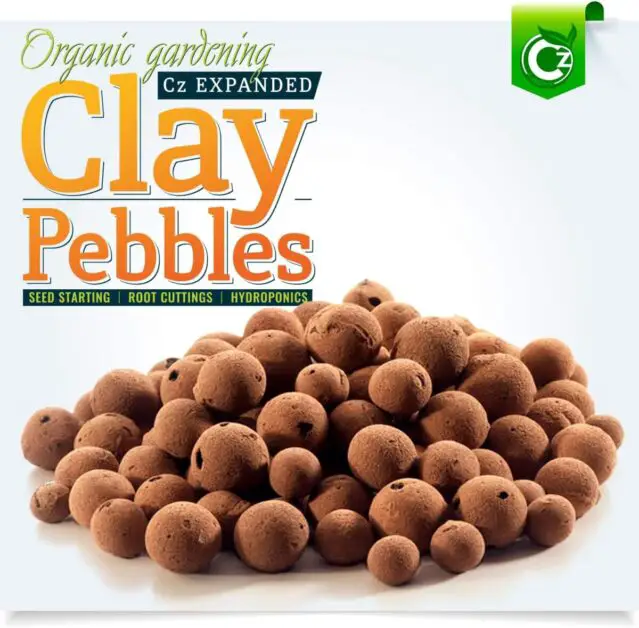
✅ pH Neutral: These pebbles maintain a neutral pH, providing a stable growing environment for a variety of plants without altering nutrient uptake.
✅ Lightweight: Clay pebbles are lightweight, making them easy to handle and transport, especially in large hydroponic setups.
✅ Reusable: They are reusable and can be cleaned and sterilized between uses, reducing waste and saving money in the long run.
✅ Aeration: Clay pebbles promote optimal aeration for plant roots, ensuring sufficient oxygenation and healthy root development.
✅ Inert: Hydroponic clay pebbles are inert and do not contain any nutrients, allowing growers to have complete control over nutrient levels in hydroponic solutions.
✅ Versatile: They can be used in various hydroponic systems, including flood and drain, drip systems, and deep water culture setups.
❌ Fragile: Clay pebbles can break easily if mishandled, potentially leading to uneven distribution in the growing medium or clogging irrigation systems.
❌ Dusty: Handling clay pebbles may generate dust, which can be irritating to the respiratory system, requiring precautions such as wearing a mask.
❌ Limited Nutrient Holding Capacity: While excellent for drainage and aeration, clay pebbles have a limited capacity to hold nutrients, requiring frequent nutrient solution replenishment in hydroponic systems.
❌ Availability: Availability of hydroponic clay pebbles may vary depending on location, requiring special ordering or alternative options for some growers.
❌ Environmental Impact: The production and transportation of clay pebbles can have environmental impacts, including energy consumption and carbon emissions.
❌ Learning Curve: Beginners may experience a learning curve when using clay pebbles in hydroponic systems, requiring experimentation to achieve optimal results.
Coconut Fiber: A Renewable and Eco-Friendly Medium for Hydroponics
Coconut fiber, also known as coir, is gaining popularity as a renewable and eco-friendly medium for hydroponic farming. This versatile material is derived from the husk of coconuts, making it a sustainable alternative to traditional substrates.
- Water Retention:
- Coir can hold up to 10 times its weight in water.
- Ensures a steady supply of moisture for plants.
- Precise control over nutrient and water delivery.
- Aeration:
- The fibrous structure of coir promotes excellent aeration.
- Prevents waterlogging and supports healthy root development.
- Beneficial Microorganisms:
- Coir is rich in microorganisms that enhance plant health.
- These microorganisms aid in nutrient uptake.
- Helps suppress harmful pathogens, reducing the need for synthetic pesticides.
- Neutral pH:
- Coir has a neutral pH, allowing precise control of nutrient solutions.
- Provides an optimal environment for plant growth.
With its sustainability, water retention capabilities, and beneficial microorganisms, coconut fiber is a promising alternative for hydroponic farming. Whether you are a commercial grower or a gardening enthusiast, incorporating coir into your hydroponic setup can have numerous benefits for both your plants and the environment.
Rice Hulls: An Affordable and Nutrient-Rich Option for Hydroponic Farming
Rice hulls are emerging as a cost-effective and nutrient-rich option for hydroponic farming. These discarded outer coverings of rice grains have proven to be a valuable alternative for growers looking to enhance their hydroponic systems without breaking the bank.

- Aeration and Drainage: Rice hulls provide optimal airflow around plant roots in hydroponic systems, preventing waterlogging and promoting healthy root development due to their lightweight and porous nature.
- Silica Content for Plant Health: High silica content in rice hulls strengthens plant cell walls, enhancing resistance to pests and diseases, contributing to overall plant health and vitality.
- Nutrient-Rich Composition: Rice hulls offer a steady release of essential nutrients like potassium, phosphorus, and silica, crucial for robust plant growth and development in hydroponic setups.
- Affordable and Sustainable: With its affordability and nutrient-rich composition, rice hulls serve as a sustainable option for hydroponic farming, enabling farmers to maximize yields without compromising quality.
- Considerations for Integration: Further exploration into rice hulls’ compatibility with different plant species, optimal incorporation ratios into growing media, and addressing potential challenges and solutions associated with their use are essential for maximizing their benefits in hydroponic systems.
By harnessing the potential of rice hulls in hydroponics, growers can unlock a budget-friendly and nutritionally beneficial solution for their crops.
Peat Moss: Balancing Moisture Levels in Hydroponic Systems
Peat moss is a widely used alternative material in hydroponic farming due to its ability to effectively balance moisture levels in the systems. This natural and organic medium is derived from decomposed sphagnum moss, making it rich in organic matter and beneficial nutrients.

As such, it is crucial to consider alternatives that are equally effective in maintaining moisture levels while being more sustainable in the long run. By exploring and implementing these options, hydroponic farmers can further enhance their growing practices and contribute to a more eco-friendly approach.
Growstones: Providing Excellent Aeration in Hydroponics
When it comes to hydroponic farming, providing adequate aeration to the root zone is crucial for plant health and growth. Growstones have emerged as an excellent alternative medium that excels in promoting optimal aeration in hydroponic systems.
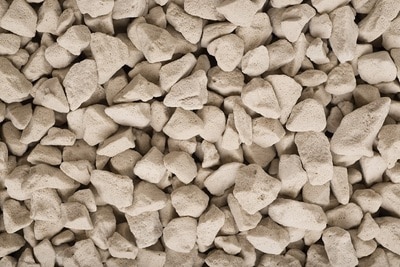
- Maximized Oxygenation: Growstones, made from 100% recycled glass, are engineered to optimize oxygen levels at the root level in hydroponic systems. Their porous and lightweight structure creates air pockets within the growing medium, facilitating efficient exchange of oxygen and carbon dioxide for enhanced root respiration and nutrient uptake.
- Improved Plant Health and Growth: The optimal oxygenation provided by Growstones promotes faster growth rates and higher yields by supporting overall plant health and vigor in hydroponic setups.
- pH-Neutral and Inert: Growstones are pH-neutral and inert, ensuring stability and consistency in the hydroponic environment. This characteristic makes them a reliable choice for growers seeking a consistent growing medium for their plants.
- Sustainable Solution: Utilizing recycled glass in their production, Growstones offer a sustainable solution for hydroponic farming, contributing to environmental conservation efforts while providing growers with efficient aeration capabilities for their crops.
Pine Bark: A Natural and Cost-Effective Medium for Hydroponic Farming
Pine bark is gaining popularity as a natural and cost-effective medium for hydroponic farming. It provides several benefits that make it a compelling alternative to traditional growing materials.
- Efficient Moisture Retention: Pine bark’s fibrous structure efficiently retains moisture while facilitating proper drainage, ensuring that plant roots receive adequate water without the risk of overwatering or root rot. This characteristic reduces the frequency of watering required, saving both time and resources in hydroponic farming.
- High Cation Exchange Capacity (CEC): Pine bark possesses a high CEC, allowing it to absorb and release essential nutrients like nitrogen, phosphorus, and potassium effectively. This property reduces the frequency of nutrient applications and minimizes the risk of nutrient leaching, ensuring consistent nutrient availability for plant growth.
- Affordability and Cost-Effectiveness: Pine bark is a cost-effective option for hydroponic growing mediums due to its availability and relatively low production costs. Its affordability makes it suitable for both small-scale and commercial hydroponic systems, providing growers with a cost-effective solution for cultivating healthy crops.
As the demand for alternatives in hydroponic farming continues to grow, pine bark is proving to be a viable and sustainable option. Its moisture retention capabilities, nutrient-holding properties, and cost-effectiveness make it a valuable addition to any hydroponic setup. With the right cultivation techniques, utilizing pine bark as a medium can contribute to successful and thriving hydroponic gardens.
Oasis Cubes: Ensuring Optimal Water and Nutrient Distribution in Hydroponics
Oasis cubes are a popular choice among hydroponic growers due to their ability to ensure optimal water and nutrient distribution in hydroponic systems. These small, porous cubes are made from inert materials, which means they do not affect the pH or nutrient balance of the growing solution. This makes them suitable for a wide range of plants, including those with sensitive root systems.

- Water Retention Capacity:
- Oasis cubes absorb and hold onto water effectively.
- Ensures a constant supply of hydration for plants.
- Minimizes water wastage and promotes water efficiency.
- Stable Root Support:
- Oasis cubes provide a stable medium for roots to anchor and grow.
- Prevents waterlogging and supports healthy root development.
- Even Nutrient Distribution:
- Water flowing through the porous structure carries essential nutrients directly to the roots.
- Ensures consistent and balanced nutrient supply for plant growth.
- Ample Oxygen Exchange:
- Porous nature facilitates root respiration.
- Prevents harmful pathogen accumulation.
Overall, oasis cubes offer hydroponic gardeners a reliable and efficient solution for ensuring optimal water and nutrient distribution. Their ability to retain water and evenly distribute nutrients makes them a valuable medium for a variety of plants. With their consistent performance and ease of use, oasis cubes have become a staple choice in hydroponic systems worldwide.
Compost: Harnessing Organic Nutrients for Hydroponic Farming
Compost is a vital and valuable alternative material for hydroponic farming, offering an array of organic nutrients that plants require for healthy growth.

- Essential Nutrients:
- Derived from the decomposition of organic matter such as food scraps, yard waste, and plant residues.
- Compost provides essential plant nutrients (nitrogen, phosphorus, potassium) derived from organic matter.
- Nutrients are released slowly over time, reducing the risk of imbalances or deficiencies.
- Improved Soil Structure:
- Compost enhances soil structure.
- Creates a favorable environment for beneficial soil microbes.
- Supports nutrient cycling and overall plant health.
- Water Retention:
- Acts as a natural sponge, retaining moisture.
- Reduces the need for frequent irrigation in hydroponic setups.
- Sustainability:
- Composting aligns with organic and sustainable agriculture principles.
- Minimizes reliance on synthetic fertilizers.
- Promotes long-term soil health.
Integrating compost into hydroponic farming systems can significantly enhance plant productivity and sustainability, while minimizing reliance on synthetic fertilizers. Its use aligns with the principles of organic and sustainable agriculture, reducing environmental impacts and promoting long-term soil health. By harnessing the power of organic nutrients through composting, hydroponic farmers can optimize yields while nourishing plants in an environmentally responsible manner.
Hemp Fiber
Hemp fiber is rapidly gaining popularity as an alternative material for hydroponic farming. With its strong and durable nature, hemp fiber offers several advantages that make it an excellent choice for growers.
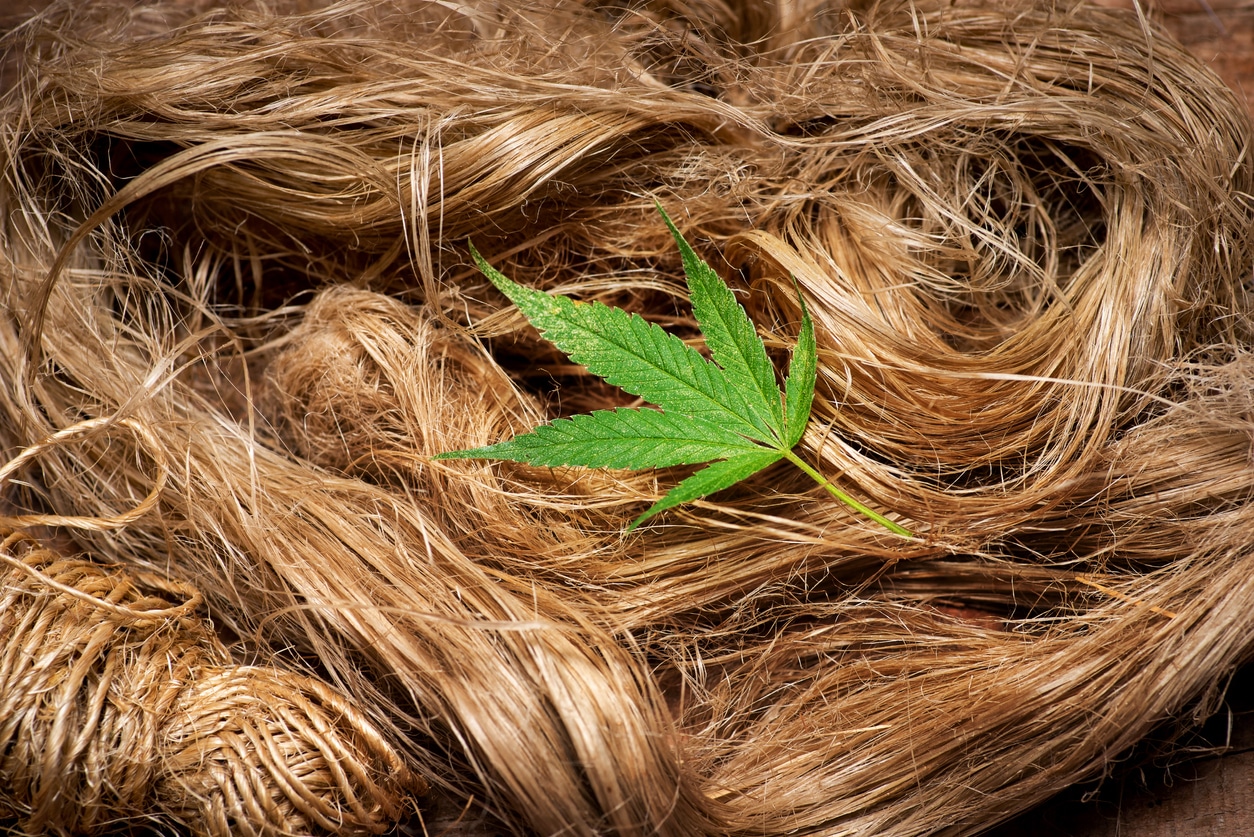
- Sustainability:
- Derived from the industrial hemp plant, which has minimal resource requirements.
- Lower environmental impact compared to other materials.
- Water Absorption:
- Hemp fiber retains moisture effectively.
- Provides adequate aeration for plant roots.
- Crucial for maintaining proper moisture levels in hydroponic systems.
Additionally, hemp fiber is resistant to mold and decay, ensuring a clean and healthy growing environment for your plants. Considering these benefits, it is no surprise that many hydroponic enthusiasts are turning to hemp fiber as a viable alternative for their growing needs.
For more information watch video:
FAQ
What is hemp fiber?
Hemp fiber is a natural material derived from the stalks of the hemp plant. It is known for its strength and durability, making it suitable for various applications.
Can hemp fiber be used in hydroponic farming?
Yes, hemp fiber can be used as an alternative material in hydroponic farming. It can be utilized as a growing medium or for other purposes within the hydroponic system.
What are the advantages of using hemp fiber in hydroponics?
Hemp fiber has excellent water retention properties, allowing for optimal moisture levels in hydroponic systems. Additionally, it is a renewable and eco-friendly option, contributing to sustainable farming practices.
How does hemp fiber enhance water retention in hydroponic farming?
Hemp fiber has a high absorbency rate, meaning it can retain moisture and release it slowly over time. This helps to maintain consistent hydration for plant roots in a hydroponic setup.
Is hemp fiber suitable for all types of hydroponic systems?
Yes, hemp fiber can be used in various hydroponic systems, including NFT (Nutrient Film Technique), DWC (Deep Water Culture), and media-based systems.
Where can hemp fiber be sourced for hydroponic farming?
Hemp fiber can be sourced from specialized suppliers or manufacturers that offer products specifically designed for hydroponic use.
Where can hemp fiber be sourced for hydroponic farming?
Hemp fiber can be sourced from specialized suppliers or manufacturers that offer products specifically designed for hydroponic use.
How does hemp fiber compare to other alternative materials in hydroponics?
Hemp fiber offers similar benefits to other alternative materials in hydroponics, such as coconut fiber and perlite. However, each material may have specific characteristics that make it more suitable for certain applications or plant types.
Can hemp fiber be reused in hydroponic systems?
Yes, hemp fiber can be reused in hydroponic systems. After a crop cycle, the hemp fiber can be cleaned, sterilized, and prepared for use in subsequent growing cycles.
Are there any disadvantages to using hemp fiber in hydroponics?
One potential drawback of hemp fiber is that it may break down over time, which could reduce its lifespan compared to some other alternative materials. However, this can be managed through proper maintenance and replacement.
Are there any specific considerations when using hemp fiber in hydroponics?
It is important to ensure that the hemp fiber used in hydroponics is of high quality and free from contaminants. Proper sterilization and pH balancing may also be necessary to optimize plant growth and nutrient uptake.

Studied Agricultural Engineering-Plant Protection at University of California, Davis.
Head of Content writing team at Southelmontehydroponics.com



